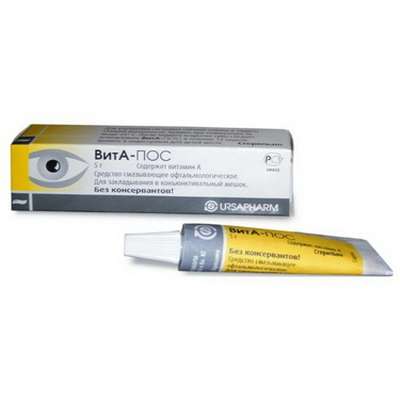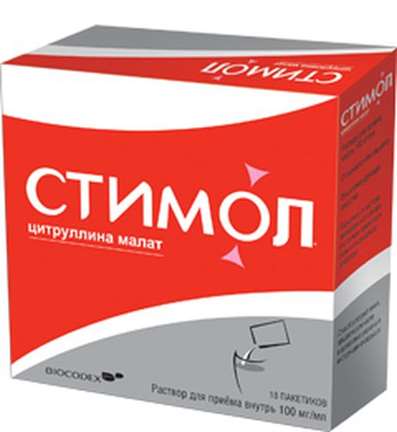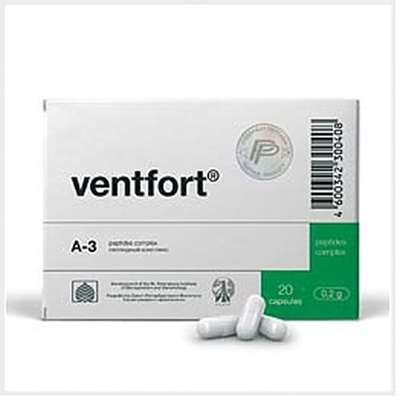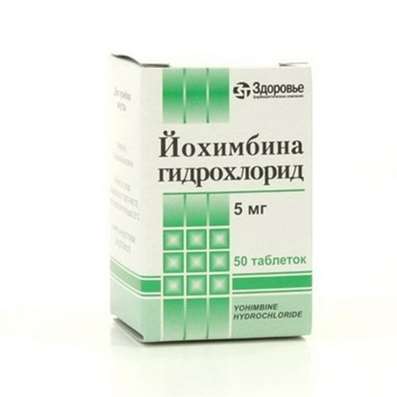Instruction for use: Nivalin
I want this, give me price
Active substance: Galantamine
Code ATX N06DA04 Galantamine
Pharmacological group
Cholinesterase inhibitor [m-, n-cholinomimetics, incl. Anticholinesterase drugs]
Nosological classification (ICD-10)
A80.9 Acute poliomyelitis, unspecified
Poliomyelitis
B91 Consequences of poliomyelitis
Poliomyelitis consequences, Post-poliomyelitis syndrome
F00.9 Dementia in Alzheimer's disease, unspecified (G30.9 +)
G30 Alzheimer's disease
Alzheimer's Disease
G70.0 Myasthenia gravis [myasthenia gravis]
Severe myasthenia gravis (Myasthenia gravis)
G72.9 Myopathy, unspecified
Myotonic myopathies, Myopathic syndrome, Myopath-like conditions
G80 Cerebral palsy
Cerebral paralysis, Children's cerebral palsy
M54.1 Radiculopathy
Acute sciatica, Radiculopathy, Radiculitis, Radiculitis with radicular syndrome, Acute radiculopathy, Pain syndrome with radiculitis, Subacute radiculitis, Radiculitis, Chronic radiculitis, Diseases of the spinal column
M79.2 Neurology and neuritis, unspecified
Pain syndrome with neuralgia, Brachialgia, Occipital and intercostal neuralgia, Neuralgia, Neuralgic pain, Neuralgia, Neuralgia of intercostal nerves, Neuralgia of the posterior tibial nerve, Neuritis, Neuritis traumatic, Neuritis, Neurological Pain Syndromes, Neurological contractures with spasms, Acute neuritis, Peripheral neuritis, Post-traumatic neuralgia, Severe pain of a neurogenic nature, Chronic neuritis, Essential neuralgia
Composition
Tablets 1 table.
active substance:
Galanthamine hydrobromide 5 mg
10 mg
Auxiliary substances: lactose monohydrate - 4/50 mg; Wheat starch - 4/10 mg; Talc - 2/2 mg; Magnesium stearate - 1/1 mg; Calcium hydrophosphate dihydrate (in tablets 5 mg) - 24 mg; MCC (type 101) - 40/27 mg
Description of dosage form
The tablets are flat, round in shape, white in color, with a bilateral facet and a risk on one side.
pharmachologic effect
Pharmacological action - anticholinesterase, m-n-cholinomimetic.
Pharmacodynamics
Selective, competitive and reversible inhibitor of acetylcholinesterase.
Stimulates nicotinic receptors and increases the sensitivity of the postsynaptic membrane to acetylcholine. It facilitates the conduction of excitation in the neuromuscular synapse and restores neuromuscular conduction in cases of its blockade of muscle relaxants with a non-depolarizing action type. Increases the tone of smooth muscles, increases the secretion of digestive and sweat glands, causes miosis.
Increasing the activity of the cholinergic system, galantamine improves cognitive function in patients with Alzheimer's dementia, but does not affect the development of the disease itself.
Pharmacokinetics
After oral administration, it is quickly and completely absorbed into the digestive tract. Absolute bioavailability is high - up to 90%. Therapeutic concentration is achieved 30 minutes after admission. Cmax in plasma after taking a dose of 10 mg is observed on the 2nd hour and is 1.2 mg / ml.
T1 / 2 - 5 hours. After repeated administration, the equilibrium state of the plasma concentration of galantamine is established.
To a small extent binds to blood proteins. Easily passes through GEB. To an insignificant extent (about 10%) is metabolized in the liver by demethylation.
It is excreted (unchanged and the form of metabolites), mainly with urine (up to 74%). The renal clearance is approximately 100 ml / min. In patients with Alzheimer's disease, the plasma concentration of galantamine can increase. With moderate and severe impairment of liver and kidney function, plasma concentrations of galantamine are increased.
Indications
Dementia of the Alzheimer's type of mild or moderate degree;
Poliomyelitis (immediately after the termination of the febrile period, as well as in the recovery period and the period of residual events);
Myasthenia gravis, progressive muscular dystrophy, myopathy;
cerebral palsy;
neuritis;
radiculitis.
Contraindications
Hypersensitivity to any of the components of the drug;
bronchial asthma;
Bradycardia;
Atrioventricular block;
Arterial hypertension, angina pectoris;
Chronic heart failure;
epilepsy;
Hyperkinesis;
Severe renal (Cl creatinine <9 ml / min) and hepatic (more than 9 on the Child-Pugh scale) disorders;
Mechanical intestinal obstruction;
Chronic obstructive pulmonary disease;
Obstructive diseases or recent surgery on the gastrointestinal tract;
Obstructive diseases or recent surgical treatment of the urinary tract or prostate;
pregnancy;
Lactation period;
Children under 9 years.
With caution: mild to moderate renal or hepatic impairment; Syndrome of weakness of the sinus node and other supraventricular conduction disorders; Simultaneous reception of drugs, slowing heart rate (digoxin, β-adrenoblocker); General anesthesia; Peptic ulcer of the stomach and duodenum, increased risk of development of erosive and ulcerative lesions of the gastrointestinal tract; Gluten enteropathy (due to the availability of wheat starch in the preparation); Deficiency of lactose, galactosemia, glucose-galactose malabsorption syndrome (lactose is included in the formulation).
Side effects
From the CCC side: decrease or increase in blood pressure, orthostatic collapse, heart failure, edema, AV block, flutter or atrial fibrillation, QT interval prolongation, ventricular and supraventricular tachycardia, supraventricular extrasystole, flushing to the face, bradycardia, ischemia or myocardial infarction.
From the digestive system: bloating, dyspepsia, gastrointestinal discomfort, anorexia, diarrhea, abdominal pain, nausea, vomiting, gastritis, dysphagia, dry mouth, increased salivation, diverticulitis, gastroenteritis, duodenitis, hepatitis, perforation of the esophagus mucosa , Bleeding from the upper and lower gastrointestinal tract.
From the musculoskeletal system: muscle spasms, muscle weakness, fever.
Laboratory indicators: increased activity of hepatic enzymes, anemia, hypokalemia, increased sugar levels or alkaline phosphatase in the blood.
Hematologic: thrombocytopenia, purpura.
From the urinary system: urinary incontinence, hematuria, frequent urination, urinary tract infections, urinary retention, calculous disease, renal colic.
From the nervous system: often - tremor, syncope, inhibition, taste distortion, visual and auditory hallucinations, behavioral reactions, including agitation / aggression; Transient impairment of cerebral circulation or stroke; Headache, dizziness, convulsions, muscle spasms, paresthesia, ataxia, hypo- or hyperkinesis, apraxia, aphasia, anorexia, drowsiness, insomnia.
From the sense organs: rhinitis, epistaxis, visual impairment, accommodation spasm, infrequently - noise in the ears.
From the side of the psyche: depression (very rarely - with suicide), apathy, paranoid reactions, increased libido, delirium.
Common: chest pain, excessive sweating, weight loss, fatigue, dehydration (in rare cases - with the development of kidney failure), bronchospasm.
Interaction
It is not recommended to combine with other holinomimetics.
It is an opioid antagonist by action on the respiratory center.
It exhibits pharmacodynamic antagonism to m-cholinolytics (including atropine, gomatropine methyl bromide), ganglion blockers, nondepolarizing muscle relaxants, quinine, procainamide.
Aminoglycoside antibiotics can reduce the therapeutic effect of galantamine.
Galantamine increases neuromuscular blockade during general anesthesia (including when used as a peripheral muscle relaxant suksametoniya).
LS, decreasing heart rate (digoxin, β-adrenoblockers), - risk of aggravation of bradycardia.
Cimetidine may increase the bioavailability of galantamine.
All drugs that inhibit the isoenzymes of the cytochrome P450 system of CYP2D6 and CYP3A4 can increase plasma concentrations of galantamine while simultaneously using them, as a result of which the frequency of cholinergic side effects (mainly nausea and vomiting) may increase. In this case, depending on the tolerability of therapy by a specific patient, a reduction in maintenance dose of galantamine may be necessary.
Inhibitors of the isoenzyme CYP2D6 (amitriptyline, fluoxetine, fluvoxamine, paroxetine, quinidine) reduce the clearance of galantamine by 25-30%. For this reason, it is not recommended to appoint simultaneously with ketoconazole, zidovudine, erythromycin.
Strengthens the depressing effect on the CNS of ethanol and sedatives.
Dosing and Administration
Inside.
Take with food, wash down with water.
The daily dose for adults is 10-40 mg in 2-4 admission.
With Myasthenia gravis, the daily dose is divided into 3 divided doses.
In Alzheimer's disease, it is recommended to start treatment with taking 5 mg tablets twice a day. Within 4 weeks, the daily dose can be gradually increased to 20 mg - 1 table. 10 mg twice a day, morning and evening. During treatment with the drug must ensure the intake of a sufficient amount of fluid. If during treatment it is necessary to stop taking the drug, then the restoration of treatment should begin with the lowest dose and gradually increase it.
Patients with moderately severe impairment of liver and kidney function. The initial dose is 5 mg once a day, in the morning, for at least 1 week, after which the dose is increased to 5 mg 2 times a day and taken within 4 weeks.
The total daily dose should not exceed 15 mg.
Treatment of poliomyelitis, cerebral palsy in children from 9 years. From 9 to 11 years, the daily dose is 5-15 mg, in 2-3 divided doses; From 12 to 15 years the daily dose - 5-20 mg, in 2-4 admission.
Overdose
Symptoms: depression of consciousness (up to coma), seizures, increased severity of side effects, severe muscle weakness in combination with hypersecretion of the glands of the mucous membrane of the trachea and bronchospasm can lead to lethal blockade of the airways.
Treatment: gastric lavage, symptomatic therapy. As an antidote - iv injection of atropine in doses of 0.5-1 mg. Subsequent doses of atropine are determined depending on the therapeutic response and the patient's condition.
special instructions
During the treatment period, one should refrain from performing work that requires an increased concentration of attention and speed of psychomotor reactions, including. Driving.
Treatment with acetylcholinesterase inhibitors is accompanied by a decrease in body weight. Especially it should be borne in mind when treating patients with Alzheimer's disease, who usually have weight loss. In this regard, it is necessary to monitor the body weight of such patients.
During the treatment period, sufficient fluid intake must be ensured.
Like other cholinomimetics, the drug can cause vagotonic effects on the part of the CCC (including bradycardia), which must be taken into account in patients with sinus node weakness syndrome and other conduction disorders, as well as with concomitant use with drugs that reduce heart rate (digoxin or Beta-adrenoblockers).
When treating with Nivalin®, there is a risk of syncope, and therefore it is necessary to monitor blood pressure more often, especially when taking the drug at higher doses (at a daily dose of 40 mg). In order to prevent such side effects, it is necessary to carefully select the dose of the drug at the beginning of treatment.
The effectiveness of the drug in patients with other types of dementia and memory impairment is not established.
The drug is not intended for the treatment of patients with mild cognitive impairment, i.e. With isolated memory impairment exceeding the expected level for their age and education, but not satisfying the criteria of Alzheimer's disease.
Relies Form
Tablets, 5 mg. In PVC film blisters and aluminum foil for 10 or 20 pieces; In a pack of cardboard 1 blister for 10 pcs. Or 1 or 3 blisters for 20 pcs.
Tablets, 10 mg. In PVC film blisters and aluminum foil for 10 pcs; In a pack of cardboard 1 or 2 blisters.
Conditions of supply of pharmacies
On prescription.
storage conditions
In dry, the dark place at a temperature of no higher than 25 ° C.
Keep out of the reach of children.
Shelf life
5 years.
Do not use after the expiry date printed on the package.

 Cart
Cart





